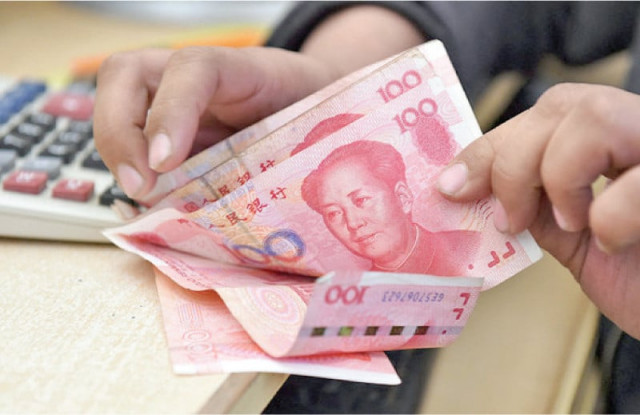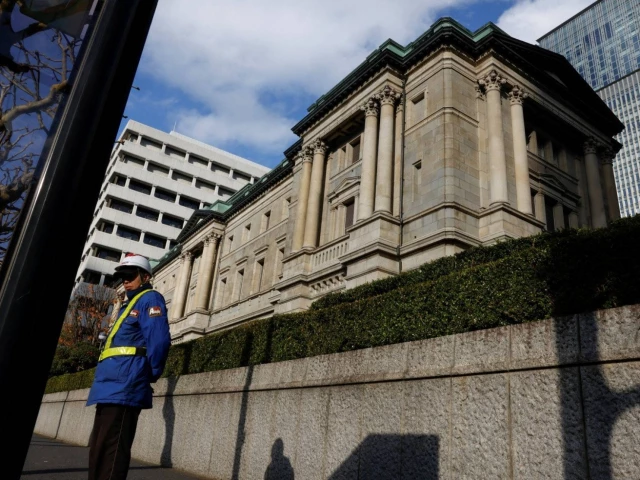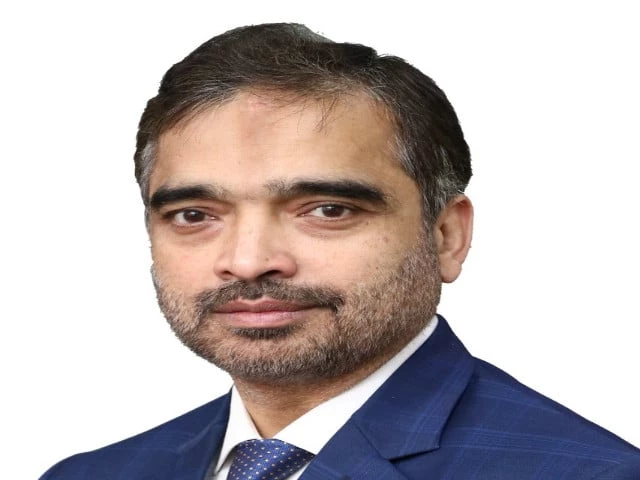Business
PSX edges up after record intra-day high | The Express Tribune
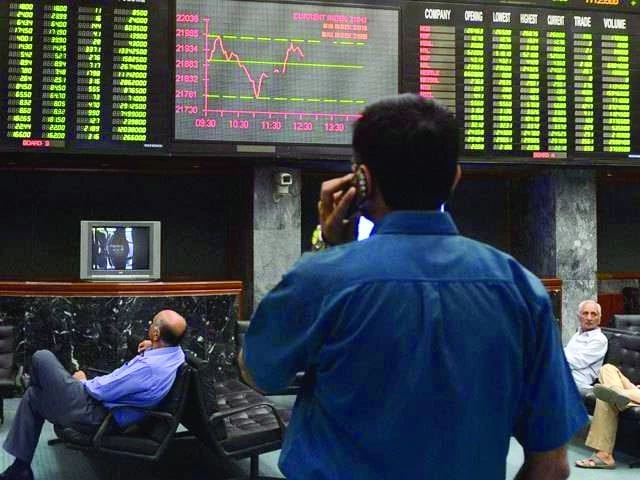
KARACHI:
The Pakistan Stock Exchange (PSX) endured a volatile session on Friday with the benchmark KSE-100 index posting a modest gain of 83.90 points to settle at 158,037.37, after briefly touching the all-time high of 159,337 earlier in the day.
The market saw strong activity in power, technology and cement sectors, while selling pressure in commercial banks capped gains.
“Another historic day at the PSX saw the KSE-100 index touch 159,337 points, supported by the strongest volumes in weeks,” noted Mubashir Anis Naviwala of JS Global.
However, heavy profit-taking emerged after hitting the record high, dragging the index down to close at 158,037, up 84 points. Power, technology and cement stocks performed strongly, while selling pressure was witnessed in commercial banks, he said.
Total traded volumes stood at 2,048 million shares as strong participation from both institutional and retail investors fueled the rally further. “The outlook remains bullish, with dips offering attractive accumulation opportunities in key sectors,” the analyst added.
Arif Habib Limited (AHL) reported that on Friday 36 shares advanced while 62 declined, where Hubco (+4.76%), The Bank of Punjab (+10%), and OGDC (+1.76%) contributed the most to the index gains. On the other side, UBL (-2.42%), Engro Holdings (-1.06%) and HBL (-1.57%) were the biggest drags. Overall, it was a solid week for the KSE-100, which gained 2.3% week-on-week.
On the macro front, AHL said, Pakistan posted a current account deficit of $245 million in August 2025, sharply higher than the $82 million deficit a year earlier, mainly due to rising import demand. This brought the cumulative 2MFY26 deficit to $624 million, compared to $430 million in the same period of last year.
Meanwhile, Pakistan Petroleum (-0.34%) announced FY25 earnings per share of Rs33.82, down 19% year-on-year, alongside cash dividend of Rs7.50 per share.
Market activity remained buoyant, with traded volumes on the KSE crossing 2 billion shares in Friday’s session, a level last witnessed in December 2021, suggesting that investors should remain cautious about potential weakness in the coming weeks.
Following a robust positive session a day earlier, the market witnessed a range-bound trading day, highlighted Topline Securities in its market review, “reflecting a tug of war between optimistic investors riding the bullish momentum and cautious participants looking to book profits ahead of the futures contract rollover week.”
The index oscillated between the intra-day high of +1,384 points (+0.88%) and the low of -431 points (-0.27%), eventually settling marginally higher by 0.05% at 158,037 points. This indecisive movement underscores investor caution amid elevated levels and the upcoming derivatives expiry, Topline said. Traded value-wise, OGDC ($21 million), PSO ($20.9 million), BOP ($15.2 million), Pakistan Petroleum ($13 million) and Hubco ($10 million) dominated the trading activity.
The top positive contribution to the index came from Hubco, OGDC, The Bank of Punjab, Systems Ltd and PSO as they contributed +663 points. On the other hand, UBL, Engro Holdings, HBL, FFC and Mari Petroleum pulled the index down by 248 points, it added.
Overall trading volumes were recorded at 2.05 billion shares compared with the previous session’s tally of 1.96 billion. The value of shares traded was Rs69.3 billion.
Shares of 486 companies were traded. Of these, 189 stocks closed higher, 266 fell and 31 remained unchanged.
Cnergyico PK was the volume leader with trading in 170.3 million shares, losing Rs0.29 to close at Rs8.12. It was followed by The Bank of Punjab with 167.3 million shares, gaining Rs2.38 to close at Rs26.26 and WorldCall Telecom with 163 million shares, losing Rs0.10 to close at Rs1.68. Foreign investors sold shares worth Rs1.37 billion, the NCCPL reported.
Business
Gold Prices Rise Today, December 22: Check 24K & 22K Rates In Delhi, Mumbai & Other Cities

Last Updated:
Gold and Silver Rates Today, December 22: In Mumbai, the price of 24-carat gold stands at Rs 1,34,270 per 10 grams, while 22k gold is available at Rs 1,23,090 per 10 grams.

Gold Rate Today, December 22.
Gold and Silver Rates Today, December 22: Gold prices rose on Monday, December 22. In Mumbai, the price of 24-carat gold stood at Rs 1,34,270 per 10 grams, while 22k gold was available at Rs 1,23,090 per 10 grams. These rates do not include GST and making charges. Silver was available at Rs 2,13,900 per kg in the spot market.
What Is The Price Of 22kt, 24kt Gold Rates Today In India Across Key Cities On December 22?
| City | 22K Gold (per 10gm) | 24K Gold (per 10gm) |
|---|---|---|
| Delhi | Rs 1,23,240 | Rs 1,34,420 |
| Jaipur | Rs 1,23,240 | Rs 1,34,420 |
| Ahmedabad | Rs 1,23,140 | Rs 1,34,320 |
| Pune | Rs 1,23,090 | Rs 1,34,270 |
| Mumbai | Rs 1,23,090 | Rs 1,34,270 |
| Hyderabad | Rs 1,23,090 | Rs 1,34,270 |
| Chennai | Rs 1,23,090 | Rs 1,34,270 |
| Bengaluru | Rs 1,23,090 | Rs 1,34,270 |
| Kolkata | Rs 1,23,090 | Rs 1,34,270 |
Gold exports from Switzerland fell 15% month on month in November as shipments to India dropped to their lowest since February, Swiss customs data showed on Thursday.
Demand in India has been affected by a price rally which sent bullion to a record high of $4,381 per troy ounce in October. Spot prices are up 65% so far this year, heading for their biggest annual gain in 46 years, amid demand for safe-haven assets.
The Swiss data showed that gold exports to India fell to 2 metric tons in November from 26 tons in October, while supplies to China, another major bullion consumer, climbed to 12 tons from 2 tons.
Gold exports from Switzerland, the world’s biggest bullion refining and transit hub, to Britain, home to the world’s largest over-the-counter gold trading hub, jumped to 45 tons last month, the highest since June, from 9 tons as bullion kept coming back from US stocks.
What Factors Affect Gold Prices In India?
International market rates, import duties, taxes, and fluctuations in exchange rates primarily influence gold prices in India. Together, these factors determine the daily gold rates across the country.
In India, gold is deeply cultural and financial. It is a preferred investment option and is key to celebrations, particularly weddings and festivals.
With constantly changing market conditions, investors and traders monitor fluctuations closely. Staying updated is crucial for effectively navigating dynamic trends.
December 22, 2025, 09:40 IST
Read More
Business
Why Croatia’s capital wants to hold the best Christmas market

Guy Delauney Balkans correspondent
 AFP via Getty Images
AFP via Getty ImagesChristmas markets are not just tradition across Europe, they are big businesses that give cities a huge economic boost every December. For Zagreb, the capital of Croatia, it is an effective way of attracting tourists outside of the country’s main summer season.
The words “tourism” and “Croatia” are likely to conjure visons of sparkling Adriatic vistas during the hottest months of the year.
Tourism accounts for more than a fifth of the economy of this Balkan country, and it is keen to encourage more visitors to arrive outside of the height of summer. Yuletide frolics are a key part of that strategy.
“We’re making a transformation,” says Croatia’s Tourism Minister, Tonci Glavina.
“We are developing as a year-round tourism destination – we are not a summer destination anymore. Croatia has really made a significant development. At some point way back it was just sun and sea, but now Croatia offers many tourism products all across the country.”
Zagreb Advent, as the capital’s Christmas markets and events are collectively known, is the poster child for this approach, with billboards in neighbouring countries urging people to attend. In fact, this year the campaign has spread as far as London’s tube stations and Milan’s buses.
There are even special trains to bring visitors from Slovenia and Hungary. All of it is part of Zagreb’s push, in a very crowded field, to become one of Europe’s most popular Christmas markets.
While some cities might limit their offering to a single location, Zagreb Advent is a multi-venue spectacular that takes over large chunks of the centre.
“The entire city has become a festive ground for celebrating Christmas throughout the whole of December,” says Slavica Olujic Klapcic, who manages one of the Christmas market areas.
“What’s really special around here is that each of the locations has its own theme, and it’s a little bit different in decoration, and in the content that it offers. So for a visitor, I think it’s a good deal, because by taking a walk through Zagreb, you can see many different spots.”
Like other Christmas markets across Europe there are no shortages of the usual seasonal staples, such as sausages and mulled wine. But there are also multiple music stages, craft stalls, vendors offering traditional Croatian food, art installations, and an enormous ice rink.

“It brings life to Zagreb,” reckons Zrinka Farina, who is involved with putting on Christmas market events outside the city’s historic Hotel Esplanade, as well as a food and music market at nearby Strossmayer Square called Fuliranje – which roughly translates as “fooling around”.
But she says that Croatians are deadly serious about trying to offer Europe’s best Christmas market. “We are such a sporty nation, we love to compete – and when we do something, we really want to be the best in the world in it.”
Such has been the effort that the city has put into Zagreb Advent since it was first held in 2014 that it was voted the best Christmas market in Europe for three years in a row, from 2015 to 2017.
The competition is organised by travel website European Best Destinations, and Zagreb’s success has helped to drive visitor numbers to the city every December.
Back in 2014, the city saw 100,198 people stay for at least one night during the last month of the year. By 2024 this had more than doubled to 245,352, which the tourist board says gave the city a €100m ($117m; £88m) economic boost.

However, Zagreb has a long way to go if it wishes to catch up with Europe’s Christmas market heavyweights.
The one held in the German city of Cologne is widely reported to be the most popular. It is expected to attract four million visitors this year, with an economic impact of €229m.
Meanwhile, Austria’s capital Vienna attracts around 2.8 million visitors to its Christmas market, and France’s Strasbourg gets two million people.
Zagreb’s event also has a limited history – it is only in its 11th year. By contrast, Dresden’s Christmas market, widely considered to be the world’s oldest, was first held in 1434. Strasbourg’s began in 1570, Vienna in 1764 and Cologne in 1820.
Despite its infancy, Zagreb Advent is said to be attracting visitors from across Europe. “They come here from Italy, Spain, Bosnia, Slovenia and even the UK,” says Lucija Vrkljan, who is working as a steward at the ice rink.
“It’s a great place to be,” says Dario Kozul, the founder of BioMania, a bistro with a stall offering vegan and gluten-free food at the Hotel Esplanade Christmas market. “We have a cross-marketing situation all the time,” he adds.
“People walk into this event and test our food – they’re really very pleased with it. Then we talk about our restaurant, and within the next couple of days, we see them there.”
 AFP via Getty Images
AFP via Getty ImagesMarko Peric, dean of the Faculty of Tourism at Croatia’s University of Rijeka, agrees that Zagreb Advent brings “unusually high” numbers of arrivals and overnight stays in December.
But he cautions that the rest of Croatia’s heavy reliance on the summer season is a weakness that still needs to be addressed. “We need to work and develop our tourist offer in other parts of the year, including the winter,” he says.
“We don’t have snow, but we can offer a lot. We should rely on our gastronomy, which is well known, with many tourists arriving just because of that. And we could use other types of events like carnival in February, or sporting events.”
Tourism Minister Tonci Glavina insists that Croatia is making moves in the right direction. He points out that visitor numbers over July and August were actually slightly down on the same period in 2024.
But the country is still on course for a record-breaking year, thanks to significant growth either side of the summer peak, with around 5% more arrivals in June and September. This, says the minister, is “just perfect”, as is the 10% year-on-year rise over the first week of December.
“We are transforming Croatia to be a sustainable tourism destination, meaning about the same number of guests in peak season, developing the shoulder seasons, and of course developing other parts of the country to be main tourism destinations.”
Zagreb Advent has already shown the benefits. Although that may not be the first thing that springs to a visitor’s mind with all the traditional Croatian treats on offer.
After all, what could be better than a post-skate fritule doughnut, except perhaps a fritule with chocolate sauce.
Business
Building material prices hit record high | The Express Tribune
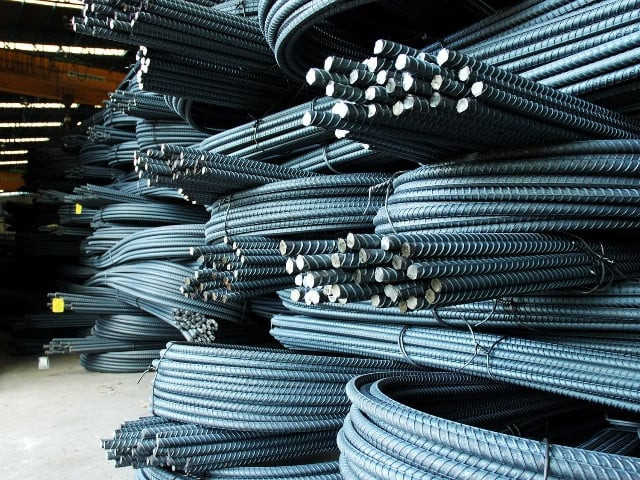
.
RAWALPINDI:
New federal and provincial taxes, along with continuous increases in electricity, gas and transportation costs, have led to an unprecedented rise in the prices of all building materials.
In the market, top-quality bricks are now priced at Rs25,000 per thousand, prompting contractors to rely more heavily on old bricks.
A bag of cement is available at Rs1,350, steel at Rs255,000 per ton, gravel at Rs3,500 per trolley, sand at Rs3,000 per trolley, masonry labour at Rs2,500 per day, and general labour at Rs1,500 per day.
Prices of cement plaster, standard marble, plumbing materials and electrical supplies have also increased by up to 30 per cent. The upward trend in building material prices continues.
Contractors say building material costs have seen record increases over the past two years.
Contractor Haji Sultan Mahmood said that three to four years ago, a four-marla double-storey house could be completed for Rs7.5 to 8 million, but the estimated cost has now crossed Rs10 million.
Due to this, contractors have shifted from constructing four- and five-marla houses to building two-, two-and-a-half- and three-marla units for sale. Five-marla plots are now divided into two units of two-and-a-half marla each, with double-storey houses built on them.
-

 Business1 week ago
Business1 week agoHitting The ‘High Notes’ In Ties: Nepal Set To Lift Ban On Indian Bills Above ₹100
-

 Business7 days ago
Business7 days agoKSE-100 index gains 876 points amid cut in policy rate | The Express Tribune
-

 Sports7 days ago
Sports7 days agoJets defensive lineman rips NFL officials after ejection vs Jaguars
-

 Business7 days ago
Business7 days agoStudying Abroad Is Costly, But Not Impossible: Experts On Smarter Financial Planning
-

 Tech1 week ago
Tech1 week agoFor the First Time, AI Analyzes Language as Well as a Human Expert
-

 Entertainment6 days ago
Entertainment6 days agoPrince Harry, Meghan Markle’s 2025 Christmas card: A shift in strategy
-

 Business4 days ago
Business4 days agoBP names new boss as current CEO leaves after less than two years
-

 Fashion4 days ago
Fashion4 days agoIndonesia’s thrift surge fuels waste and textile industry woes


